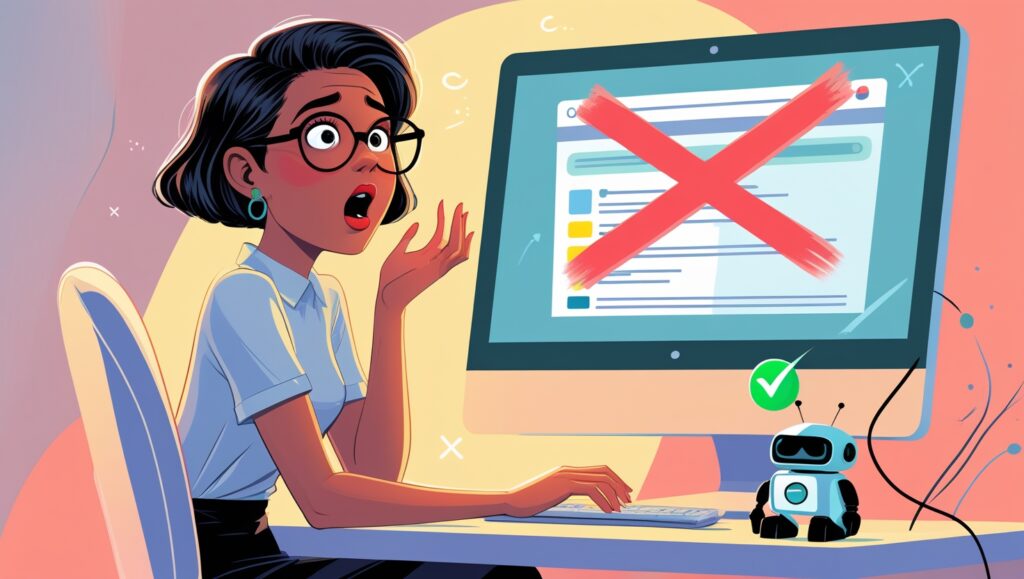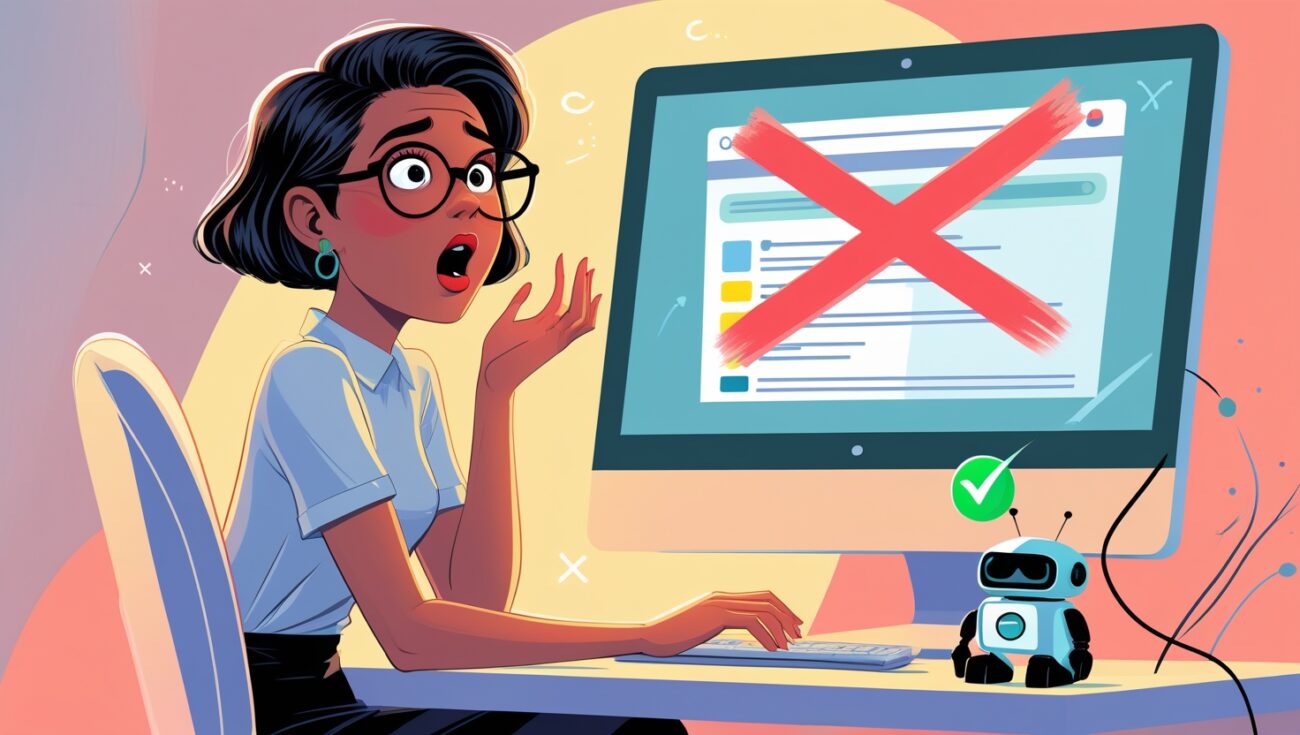The Surprising SEO Mistake All Bloggers Make (And How to Fix It Automatically)
As a content creator, I know you put countless hours into writing and publishing high-quality articles. You’ve done the keyword research, you’ve crafted the perfect title, and you’ve hit the publish button. But what if there was one critical mistake you were making, a silent killer of your SEO efforts, that was completely within your control? It’s a mistake so common, almost every blogger makes it at some point, and it’s holding your website back from its full potential.
I’ve made this mistake myself countless times. It’s subtle and easy to overlook, but it’s one of the most significant things I‘ve learned to fix. The mistake is simple: neglecting orphaned pages. The good news is, once you understand the problem, you can fix it almost instantly with the right tools.

Table of Contents
The Mistake Revealed: Neglecting Orphaned Pages
So, what exactly is an orphaned page? In simple terms, it’s a valuable piece of content on your website that has no internal links pointing to it. Think of it as a house with no roads leading to it. Users can’t find it easily, and more importantly, search engine crawlers struggle to discover it.
Why is this so bad for your SEO?
- No Link Equity: Internal links are how you pass “link equity” or authority to other pages. An orphaned page receives no link equity from the rest of your site, making it incredibly difficult to rank.
- Poor Crawlability: Search engines discover and index content by following links. Without an incoming link, your orphaned content might never get fully crawled or indexed, rendering your hard work practically invisible.
- Poor User Experience: If a user can’t find your content through navigation or a contextual link, it’s a poor user experience.
This mistake is surprisingly easy to make, especially as your blog grows. You get so focused on creating new content that you forget to go back and link to it from older, authoritative pages.
The Manual Fix: A Time-Consuming Nightmare
When I first learned about orphaned pages, I tried to fix them manually. It was a nightmare. I would spend hours going through my site, page by page, trying to find content that had no links pointing to it. Then, I’d have to search my entire site again for a relevant page to link from, all while trying to find a natural way to fit the link in.
This manual process is tedious, inefficient, and not scalable. For a blogger who wants to grow, every hour spent on this is an hour not spent on creating valuable content. It’s a problem that requires a modern solution. To save time and fix your orphaned pages, start your free trial of Linkbot today.
The Automatic Fix: How Software Changes Everything
This is where automation becomes a hero. Internal linking software is specifically designed to solve this problem for you. These tools can automatically crawl your entire site and provide a clear, actionable list of every orphaned page.
Once the pages are identified, the best tools will also suggest the most relevant, high-authority pages on your site to link from. It’s like having a dedicated SEO assistant that works around the clock to ensure every single article you publish is a part of your site’s powerful internal link network. This is the difference between working harder and working smarter. I’ve personally used Linkbot to fix my orphaned pages and saw a huge jump in my traffic. You can explore its features here.
The SEO Benefits of a Clean Site
By fixing orphaned pages and building a clean, well-linked site, you unlock a host of powerful SEO benefits:
- Improved Crawlability: Search engines can easily discover and index all of your content, ensuring your hard work gets the visibility it deserves.
- Link Equity Distribution: Every page gets a share of the “link juice” from your most powerful pages, helping your less-authoritative content rank higher.
- Higher Rankings: A well-structured site is a strong signal of quality and authority to search engines, leading to better rankings across the board.
Fixing this one, simple mistake can have a huge, long-term impact on your SEO. It’s a foundational step that every blogger should take.
Conclusion: Stop Making This Mistake Today
The surprising SEO mistake that almost all bloggers make isn’t about keywords or backlinks; it’s about neglecting the foundation of their own website. Leaving orphaned pages to sit in isolation is a waste of your valuable content and a detriment to your SEO efforts.
By using the right tools to identify and fix this problem automatically, you can take control of your site’s destiny and ensure that every piece of content you create is working hard for you. Don’t let this common mistake hold you back any longer. Start fixing your orphaned pages automatically with Linkbot and see the difference for yourself.
Beyond the technical SEO benefits, fixing orphaned pages has a significant impact on user experience. Think about it: a user lands on your site and can’t find that one perfect article they were looking for because it’s not linked from anywhere. That’s a frustrating experience. A well-structured, interconnected site makes it easy for users to find the information they need, which directly contributes to the “Experience” part of Google’s E-E-A-T framework.
This simple fix also makes your life as a content creator much easier when it comes to tracking and auditing. When your content is all part of a cohesive network, it’s simpler to see which posts are performing well and which aren’t. It gives you a clear picture of your site’s health and helps you make data-driven decisions about your future content strategy. An automated tool provides a dashboard that makes this visibility a breeze.
Your site’s “crawl budget,” the number of pages search engines will crawl on your site in a given period, is a finite resource. Orphaned pages are a massive waste of that budget. Bots can’t find them, and your hard work sits unindexed. By fixing them, you ensure that every part of your site is easily accessible and that your crawl budget is being used efficiently to find and rank your most valuable content.
By bringing orphaned pages back into your internal link network, you also help them rank for keywords they never had a chance to before. A page that receives no link equity is unlikely to rank for anything. But when you link to it from an authoritative page on your site, you pass on that value and give it a fighting chance to rank for its target keywords and a host of long-tail variations.
It’s important to distinguish between an orphaned page and a low-priority page. A low-priority page might not be linked to from your homepage, but it’s still part of your internal link structure. An orphaned page, by definition, is completely cut off. The goal is not to link to every single page from your homepage but to ensure every page has at least one incoming link from a relevant place on your site.
For me, fixing this issue has completely changed my content calendar. Now, when I plan a new post, I immediately think about how it can be linked to from an old, authoritative article. I also make a note to find relevant older content to link to from my new post. This ensures that every piece of content I create contributes to the health of my entire site from the very beginning.
A hierarchical site structure—where pillar pages link to topic clusters, and those pages link to more specific articles—is the best way to prevent orphaned pages from happening in the first place. This planned approach, which is so much easier to implement with an automated tool, ensures that every new piece of content has a home and a clear path to follow.
When you fix an orphaned page, the anchor text you use is critical. It should be natural and descriptive, providing genuine context for the reader. Don’t just link to the page using a generic “click here.” Instead, find a relevant phrase that accurately describes the content of the orphaned page and link using that.
I remember the first time I used a tool to find my orphaned pages. I was shocked. I had so many valuable articles that were just sitting there, invisible. The immediate jump in traffic and rankings after I fixed them was a powerful reminder that sometimes, the simplest fixes can have the biggest impact. It was a true “aha!” moment for me.
Ultimately, the long-term ROI of fixing orphaned pages is immense. It’s a foundational SEO task that you only have to do once to see a lasting effect. The traffic and rankings you gain from revitalizing that content are a continuous return on a small initial investment of time and effort.
Think of your website as a growing plant. Every new page is a new leaf, and internal links are the veins that carry nutrients to it. An orphaned page is a leaf that’s not connected to the rest of the plant; it will wither and die. By fixing this, you’re ensuring that every part of your website is getting the nourishment it needs to thrive.
The truth is, this isn’t just a surprising mistake; it’s a fundamental flaw in your site’s architecture. And the hero move isn’t about some fancy new keyword strategy—it’s about building a solid foundation from the ground up, making sure every single piece of content is an active participant in your site’s growth.

